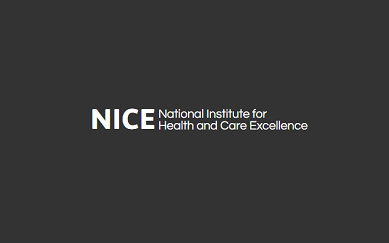NICE report recommends strength and balance training for fall prevention
News
The National Institute for Health and Care Excellence (NICE) has recommended strength and balance training programmes for patients who are at risk of falling in its latest report. These programmes have shown to reduce the rate of falls, and the NHS RightCare pathway consider these programmes to be high-value interventions.
Implementation of strength and balance training
Shared learning examples submitted by Ashford and St Peter’s Hospitals NHS Foundation Trust (ASPH) and Oldham Clinical Commissioning Group describe how they have implemented strength and balance training programmes in their regions, as recommended by NICE.
As of February 2018, ASPH had invited 20 people following a hip fracture to attend, of which 15 completed the course. By the end of the programme, all were categorised as low risk of falls, except 1 person who was categorised as medium risk. Follow up at 6 months has shown that whilst 4 out of 10 people had fallen again, only 2 of these were admitted to hospital.
In Oldham, they found that on average, three quarters of those invited to attend completed the majority of the programme. At 9 months, 88.8% of participants showed improvement in the timed ‘up and go’ test to measure mobility, and 90.4% showed improvement in their assessment of balance and gait. Read the full report here.
Case studies: virtual reality rehabilitation
Summit Medical and Scientific have been a strong advocate of strength and balance training to prevent falls for a number of years. Our partners provide a wide range of rehabilitation equipment which satisfies the recommendations included in clinical guidelines for impaired gait or balance therapy: start early, train often, train with variety, practise day-to-day tasks, and monitor progress. You can find a list of all our rehabilitation products, ideal for strength and balance training for fall prevention, here. If you’re particularly interested in products suitable for balance training, we have curated a list of balance solutions. These products include Motek‘s augmented and virtual reality C-Mill treadmill, Hocoma‘s Andago (a free-moving robotic body weight support system), and a wide range of AMTI force plate technology and equipment.
We are pleased to have a number of testimonials and case studies on our website from our customers who have used Motek‘s C-Mill treadmill and Computer Assisted Rehabilitation Environment (CAREN) in fall prevention rehabilitation using virtual reality:
“A 60-year-old patient has right-sided weakness following a haemorrhagic stroke in 2011. He has had 12 sessions using Virtual Reality, including the C-Mill, and he feels he is confident in walking and everyday movement including indoor and outdoor activities. This includes managing to step up curbs and weather-related challenges. The C-Mill’s Gait Adaption applications have helped with better placing of the right foot when using the stepping stones programme, and the obstacle avoidance challenges has helped this patient with walking on pavements.” – The Brain and Spinal Injury Centre. Read more.
“Military veteran John, a 31 year-old male, sustained an AVM (Arteriovenous Malformation) in 2017 while working at home building a horse box… Following surgery he had a significant weakness of his left side, peripheral visual field loss on this left side and hypersensitivity on the left side of his arm. He was unable to mobilise in terms of sitting and standing and his balance was compromised. He was totally dependent on all needs… He attended all of the CAREN sessions twice weekly for a total of eighteen sessions… His personal goals were to reduce the sensitivity of his left arm, increase social participation, to be able to return to work and to be able to run again. All his clinical outcome measures improved: his NEADL (Nottingham Extended Activities of Daily Living) saw a significant improvement…. He achieved his goal of running along with his goal of being independent in his personal care. He is now volunteering at the Equestrian centre owned by his wife and independently socially integrates into society. He stated that the CAREN was motivational, challenging and exciting.” – The Brain and Spinal Injury Centre. Read more.
“Male, 58, Right hemiplegia. Discharged from NHS service with Stedy for transfers and right shoulder pain. Daily exercise stand in OSF for one hour in his house. On starting rehab at Morrello, US Imaging confirmed subluxation. Set up with shoulder stim and Bioness L300 Plus system for dropfoot and knee control. Able to do sit stand exercises in parallel bars, progressing to walking. He was late getting on the C-Mill as he did not feel able to walk long enough….VR treadmill training [using the C-Mill] allows [this patient] to increase intensity of training needed to make gains in the chronic phase of Stroke. Significant functional improvements in gait are still possible long after Stroke with a high intensity rehabilitation programme.” – The Morrello Clinic. Read more.
The C-Mill is currently available for clinical trials with patients. If you would like to find out more, please contact us.

